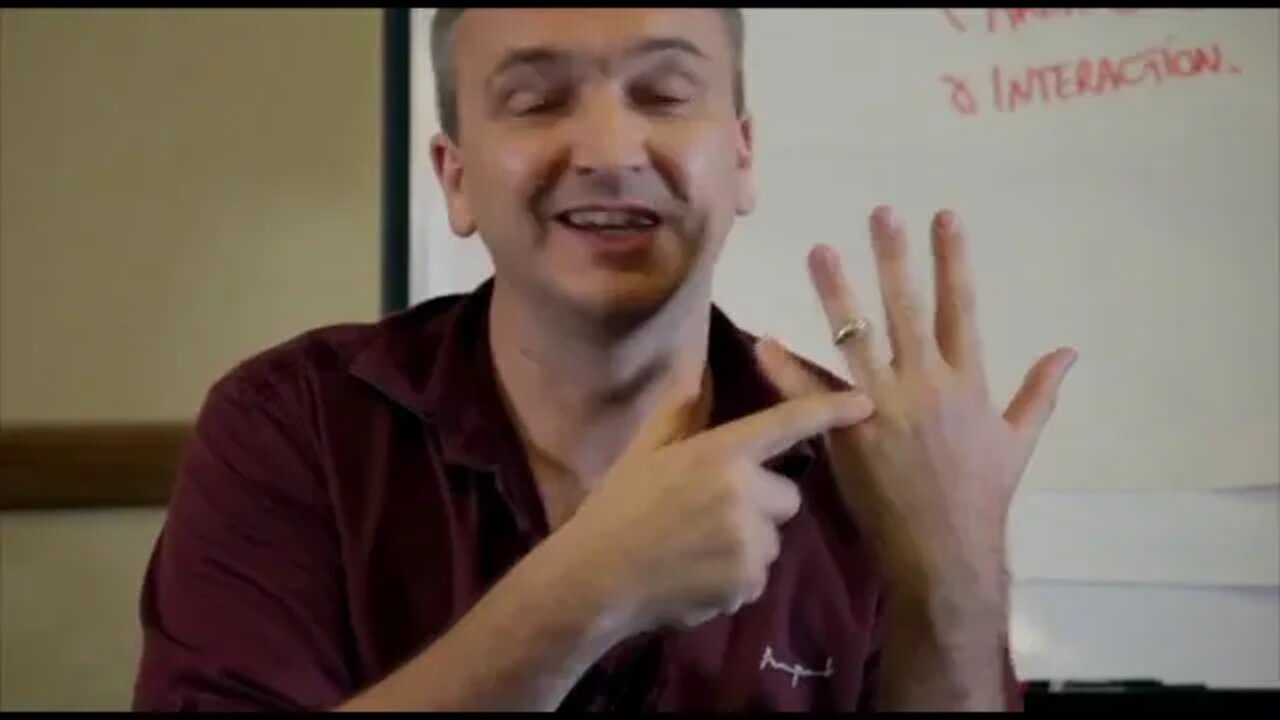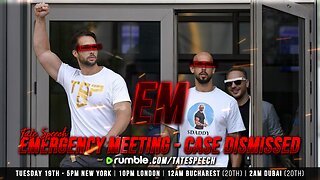Premium Only Content

3. Assessment and Treatment of Phantom Limb Pain by Andrew T. Austin (Mirror Box Therapy)
Assessment and Treatment of Phantom Limb Pain by Andrew T. Austin (Mirror Box Therapy) based on the original ideas of V.S. Ramachandran.
Video 3.
00.01 How to use the mirror box
08.30 First non-amputee experimentation with mirror box
12.18 Second non-amputee experimentation with mirror box
13.20 Getting results, expectations, time pressures on appointment duration
15.25 What to do with the prosthetics when using the mirror box
25.15 Treatment session structure
30.00 Considerations of limb transplants
32.30 Patient expectation management
34.55 Instructions to patient
37.00 Question from audience about medication for pain relief
38.50 The stages of the treatment session (Expectation and anticipation)
40.49 The stages of the treatment session (Focus)
42.00 The stages of the treatment session (Reaction)
43.00 The stages of the treatment session (Emotional reunion with limb image)
44.05 The stages of the treatment session (Abreactional states)
45.55 The stages of the treatment session (Fascination and Exploration)
48.18 The stages of the treatment session (Fatigue)
49.00 Results and effect of mirror box session (Telescoping phenomena)
50.40 Demonstration with upper limb amputee
73.50 end
-------------------------------------------------------------------
Notes:
1. The mirror box ("mirror visual feedback (MVF)") technique is invariably more effective and dramatic when working with a phantom arm rather than the leg. Where there is a below-knee amputation, success is usually greater than with an above-knee amputation. If you have data suggesting differently to this, please get in touch, I'd like to hear from you. My email: freshnewbrain@gmail.com
2. Where sensory “remapping” occurs, i.e. stimulation to the corresponding cheek, neck and throat elicit sensation in the phantom hand/forearm, the mirror box approach is invariably successful. Where no remapping occurs, results are less significant, incomplete or entirely absent with no benefit bein derived from MVF. I have no idea why this should be the case.
3. Where the pain is caused by nerve pain or stump pain, the mirror box is of little benefit. Many patients, and indeed clinicians, find it difficult to differentiate between tump pain and phantom limb pain. Of course, both issues may be present in the same patient thus confusing the issue for all concerned.
4. Therapists using the mirror box find it doesn’t work primarily for a very simple reason – they don’t set things up appropriately. For example, one chap with amputation of left arm at shoulder level following brachial plexus injury had the problem that the phantom arm was twisted up behind his back. Therefore at this juncture, there is no value in using the mirror box. First, we had to manipulate the phantom into a position whereby it was in front of him so that it could be placed into the box. Another patient, having manipulated the phantom into the right position found no benefit from the mirror until we removed his wristwatch from his remaining wrist. The illusion needs to be total and convincing.
5. At the point the `effect` occurs with the mirror, there is usually an overwhelming release of emotion that is not unpleasant. After this initial effect, the person feels pleasantly different. This emotional state does not appear to recur with subsequent sessions with the mirror box.
6. Success vastly increases where the client approaches the box with their remaining arm already in a mirror-position to that of the phantom. I think this is the problem that occurs when working with phantom legs, where often the phantom is a different length to that of the remaining limb.
I’d be interested to hear of any other experiences people have with the technique, both successful and otherwise. Eventually, I hope to collate the data and present it on the website in due course.
Email me: Andrew T. Austin (not a doctor) at: freshnewbrain@gmail.com
My main website: https://www.23NLPeople.com
#neurology #medicine #pain
-
 2:24:56
2:24:56
Kim Iversen
5 hours agoRussia Threatens To NUKE Ukraine | RFK Jr Called Science’s True Voice By Former CDC Chief
63.9K61 -
 1:16:12
1:16:12
Savanah Hernandez
3 hours agoCorrupt Democrats attempt to stop Trump’s plan to fix America
20.7K7 -
 53:12
53:12
Glenn Greenwald
5 hours agoImprisoned For Journalism: Jeremy Loffredo On His Detention In Israel, Censorship & More | SYSTEM UPDATE #368
72.8K58 -
 DVR
DVR
Man in America
8 hours agoTrump, Elon, CBDCs, Digital Prison & the Great Taking w/ James Patrick
11.1K3 -
 LIVE
LIVE
I_Came_With_Fire_Podcast
6 hours agoSPECIAL LIVE FIRE (w/ Aaron Praeger)
1,249 watching -
 49:18
49:18
PMG
21 hours ago $0.01 earned"Biden Regime Trying to Trigger WW III Before Trump Term Begins, and Ballots Still Being Counted?"
8.81K -
 DVR
DVR
Flyover Conservatives
12 hours agoWhile Trump Claimed Victory, Guess What They Were Doing Behind the Scenes... - Mel K | FOC Show
16.6K -
 LIVE
LIVE
Adam Does Movies
7 hours ago $0.05 earnedIs Dwayne Johnson A Bankable Star Anymore? + TONS Of New Movie Trailers - LIVE!
402 watching -
 3:00:44
3:00:44
Tate Speech by Andrew Tate
15 hours agoEMERGENCY MEETING EPISODE 91 - CASE DISMISSED
354K299 -
 2:22:54
2:22:54
WeAreChange
6 hours agoLiberal Media COLLAPSING! Begging For Forgiveness!
72.3K30